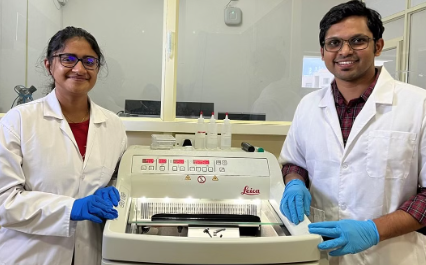IISc Develops 3D Hydrogel to Study TB Research
New research at the Indian Institute of Science (IISc), Bengaluru has led to a potential advance in tuberculosis (TB) study. The Department of Bioengineering has created a new 3D hydrogel culture system similar to mammals’ lung environment. This system will help researchers better understand tuberculosis infections and see how well medicines work.
Significance of the 3D Hydrogel Culture
Traditional ways of studying Mycobacterium tuberculosis (Mtb) infection use flat, two-dimensional culture plates that don’t accurately reflect the three-dimensional surroundings of lung tissues, which leads to data that isn’t very accurate. On the other hand, IISc’s new 3D hydrogel culture method uses collagen, an important part of lung cells’ extracellular matrix (ECM), making a more accurate model of lung tissue.
Advantages of the 3D Hydrogel System
This new method fixes the problems with the old ones by making a soft mesh that lets immune cells called human macrophages interact with TB bacteria in a way that is very similar to how they would in a real person’s lung. This method keeps mammalian cells alive for up to three weeks, which is a lot longer than the 4–7 days that normal cultures last. This is important because Mtb is a pathogen that grows slowly.
Implications for TB Treatment
The research showed that even small amounts of pyrazinamide, a popular drug used to treat tuberculosis, worked well in this new model. RNA analysis of the lung cells grown in the 3D hydrogel revealed that they were very similar to human samples, which added to the model’s credibility. The 3D hydrogel culture method that was created at IISc is a big step forward in TB research. It could lead to more accurate and effective treatment plans. A patent filing in India shows that the research has not only hit a stage where it looks good, but it is also useful. This new model could change how TB is studied and treated, which could lead to better disease control around the world.
Month: Current Affairs - June, 2024
Category: Science & Technology Current Affairs






